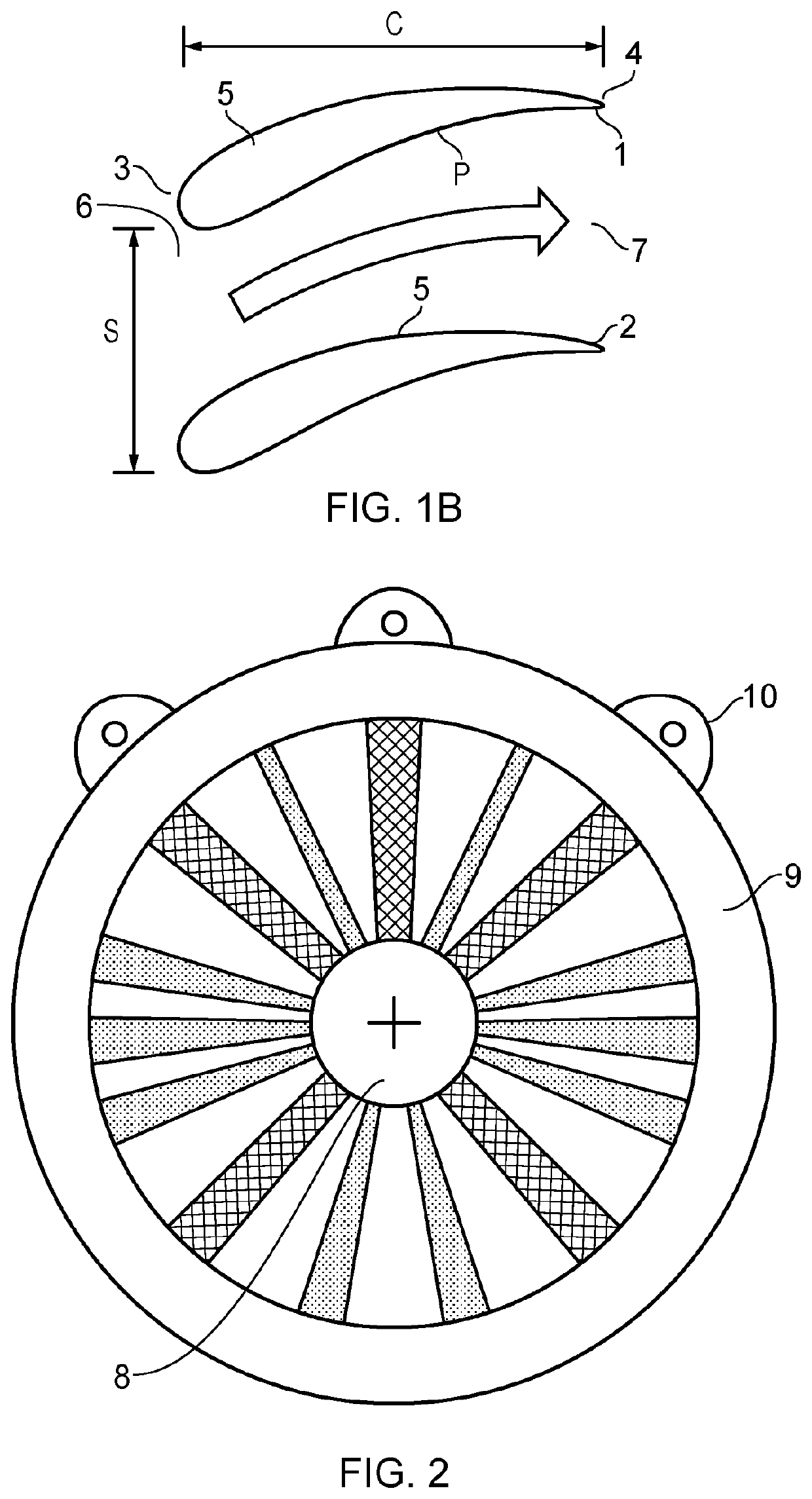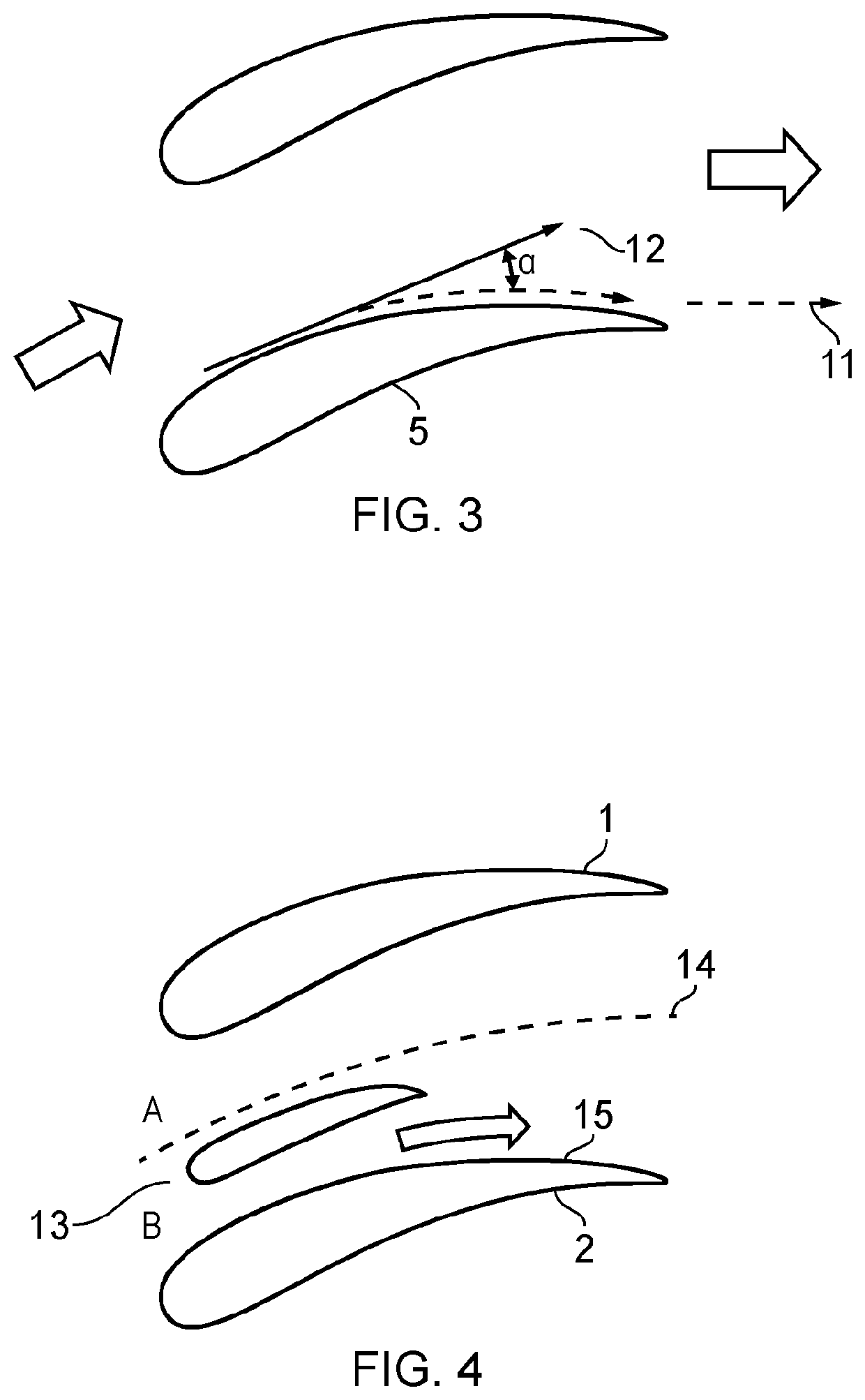Aircraft turbine rear structures
a technology of rear structure and turbine, which is applied in the direction of machines/engines, stators, mechanical equipment, etc., can solve the problems of limiting the amount of contoured vanes to turn the exhaust gas, too great an angle, and inhibiting the exhaust gas from leaving the engine at high speed, so as to improve the de-swirling effect
- Summary
- Abstract
- Description
- Claims
- Application Information
AI Technical Summary
Benefits of technology
Problems solved by technology
Method used
Image
Examples
Embodiment Construction
[0054]FIG. 1A shows the position of the turbine rear section (TRS) in a gas turbine engine.
[0055]FIG. 1B shows a cross-section through a pair of adjacent guide vanes for a turbine rear structure (TRS). The TRS is located at the rear of the engine and provides a number of functions. For example, the TRS provides the structural connection for the engine to the aircraft body through lugs or mounts, which are described below.
[0056]The TRS functions aerodynamically to cause exhaust gas that has been generated by the turbine in the engine to leave the engine in a generally axial direction—that is parallel with the axis of rotation of the shaft running along the centre-line of the engine.
[0057]Returning to FIG. 1B, two adjacent vanes 1, 2 are shown. Each vane comprises a leading edge 3 and a trailing edge 4 and an aerodynamic profile 5, consisting of a suction side S (primarily convex) and a pressure side P (primarily concave) extending there between on each side of the vane.
[0058]A TRS co...
PUM
| Property | Measurement | Unit |
|---|---|---|
| radius | aaaaa | aaaaa |
| radius | aaaaa | aaaaa |
| distance | aaaaa | aaaaa |
Abstract
Description
Claims
Application Information
 Login to View More
Login to View More - R&D
- Intellectual Property
- Life Sciences
- Materials
- Tech Scout
- Unparalleled Data Quality
- Higher Quality Content
- 60% Fewer Hallucinations
Browse by: Latest US Patents, China's latest patents, Technical Efficacy Thesaurus, Application Domain, Technology Topic, Popular Technical Reports.
© 2025 PatSnap. All rights reserved.Legal|Privacy policy|Modern Slavery Act Transparency Statement|Sitemap|About US| Contact US: help@patsnap.com



